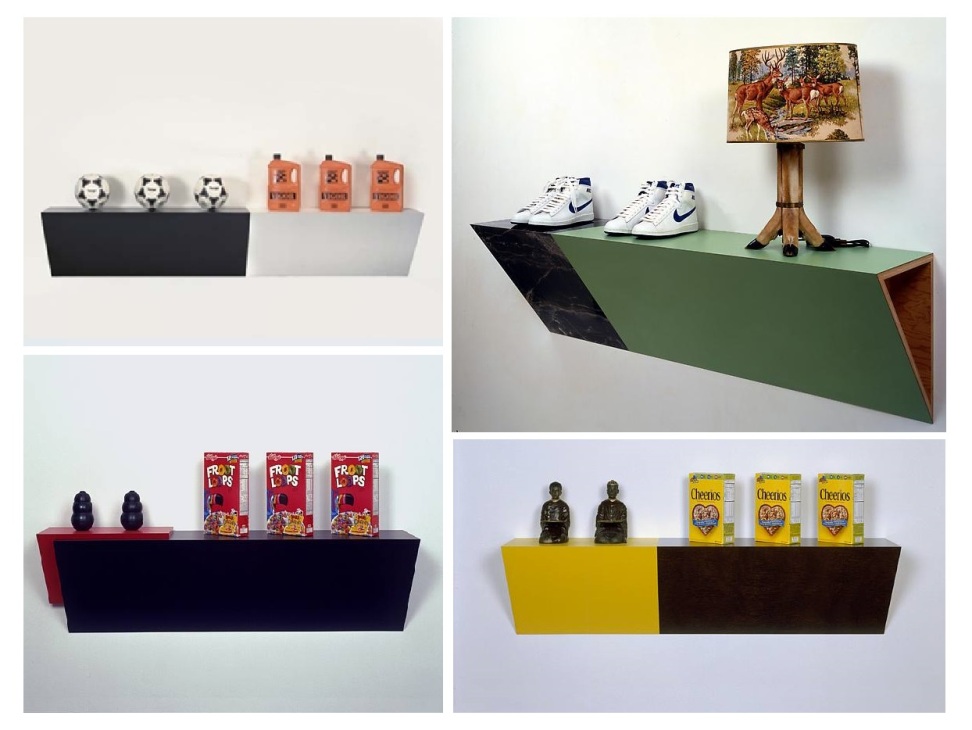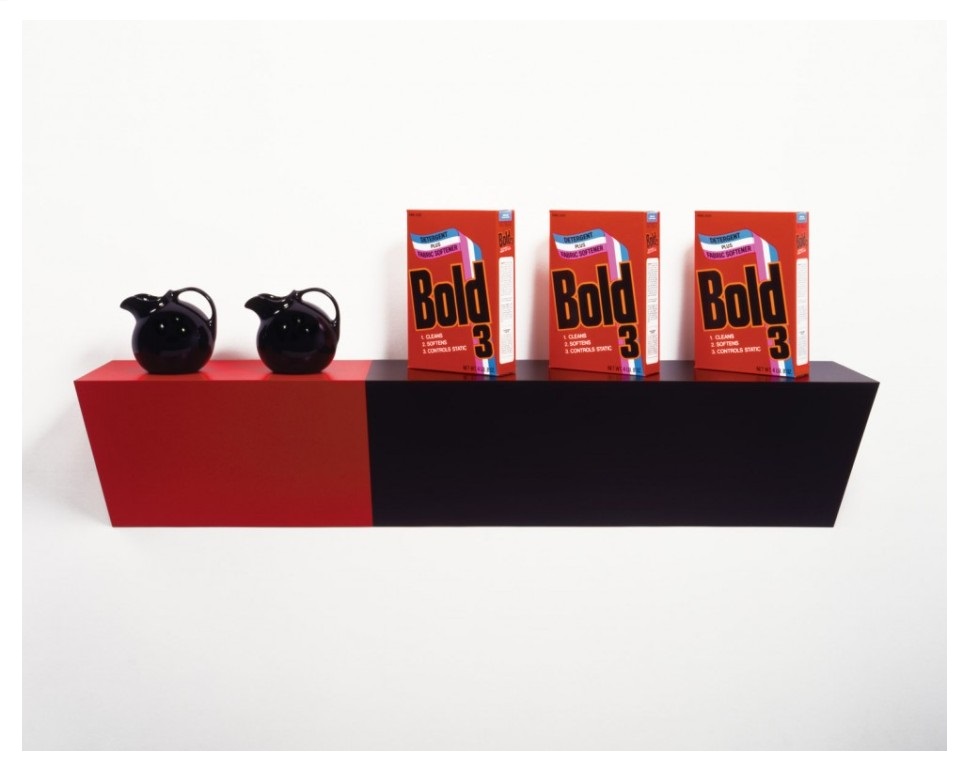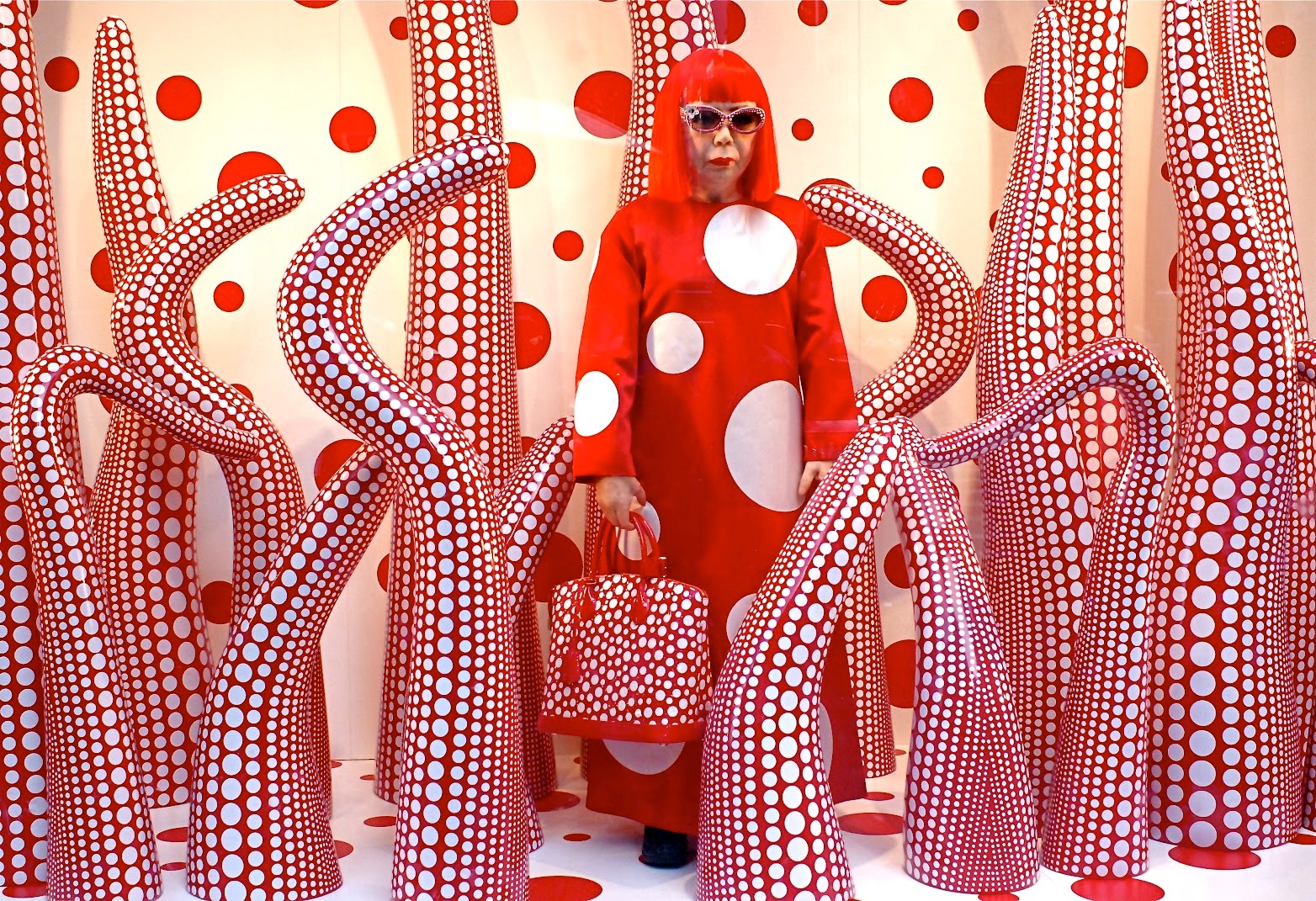 Haim Steinbach has crafted a visual language that places everyday goods in arrangements that use repetition and formal contrast to push even further the idea that artist’s role is to select items and serve them up in unexpected or meaningful juxtapositions. (The History of the Found Object in Art, by Ian Wallace – artspace.com)
Haim Steinbach has crafted a visual language that places everyday goods in arrangements that use repetition and formal contrast to push even further the idea that artist’s role is to select items and serve them up in unexpected or meaningful juxtapositions. (The History of the Found Object in Art, by Ian Wallace – artspace.com)
Haim Steinbach unites the day-to-day habits of the home with the seemingly more conventional museum-based act of collection and display. (serpentinegalleries.org)
Haim Steinbach‘s visual language prompts a conversation about the increasingly blurred lines between the functions of modern art and visual merchandising. Although there are superficial similarities in how both convey certain messages, we often assert that there is no shared ground in terms of pure intention. This assertion holds some truth.

However, when renowned modern artists collaborate with major brands, the distinction between modern art and visual merchandising becomes murky. Displays like those created by Haim Steinbach for the sake of contemporary art -if displayed in a storefront – may convey weak messages to potential customers, yet at times, modern art can be compelling enough to influence customers’ purchasing decisions, particularly for high-interest or high-priced items.
From that point of view “Art is one area that grabs the luxury market’s attention because oftentimes they are the few who can afford it…Store windows are all about grabbing people’s attention and the luxury audience can be a difficult audience to grab…Unconventional windows such as art displays can be used as effective, attention-grabbing marketing strategies…Achieving success or failure depends on how well brands and retailers understand the tastes and habits of their target audiences.”*
Who could overlook the Louis Vuitton windows designed by Yayoi Kusama? This strategy aims to attract tourists, particularly from Japan, to the brand’s flagship store on Fifth Avenue in New York.

Nevertheless, reasonably enough, if a luxury retailer gives the display over to art instead of merchandise too regularly, consumers might lose sight of their connection to the merchandise contained within the store’s footprint. Furthermore Art displays are an intriguing break from the norm, but are not ideal if a brand is looking to push products.
* How-to guide for luxury brand store windows, by Tricia Carr – luxurydaily.com











